
Roots
The story of textured hair, particularly for Black and mixed-race communities, pulses with echoes of ancient practices and vibrant cultural identity. This is not merely a biological attribute; it stands as a living chronicle, a testament to resilience forged across generations. From ancestral lands, where hair signaled status, lineage, and spiritual connection, to the enforced disconnections of enslavement and the subsequent battles for recognition, the journey of textured hair is profoundly linked to socio-political struggles.
Our strands carry the whispers of the past, the strength of those who came before, and the defiant declaration of selfhood in every coil and kink. Understanding the foundational elements of textured hair requires looking beyond surface appearance, recognizing its inherent structure and the historical forces that sought to diminish its value.

Hair Anatomy and the Ancestral Strand
The unique helical shape of textured hair, often described as possessing a distinct curl pattern, is not a deviation from a norm but a magnificent expression of biological diversity. Each strand, emerging from its follicle, carries a signature determined by genetic lineage. Unlike straight hair, which tends to be more cylindrical in cross-section, highly textured hair often exhibits an elliptical or even flattened cross-sectional shape.
This distinct geometry, coupled with fewer disulfide bonds arranged in a more varied distribution along the cortex, contributes to its characteristic coils, kinks, and waves. The science behind this structure speaks to a deep ancestral blueprint, perfectly adapted to diverse climates and environments.
Consider the hair follicle itself. In textured hair, the follicle often has an elliptical opening, and the hair grows from the scalp at a sharper angle, causing the hair to bend and coil as it lengthens. This contrasts with straighter hair, where follicles tend to be rounder and grow more perpendicularly.
The differential growth rate on either side of the hair shaft, a phenomenon known as cortical asymmetry, further contributes to the curling. This inherent biological design, once misunderstood or even pathologized by dominant Eurocentric beauty standards, now stands recognized for its complexity and singular beauty.

Textured Hair Classification and Cultural Reverberations
The act of classifying textured hair has itself been a site of both scientific endeavor and socio-cultural contention. Systems like the Andre Walker Hair Typing System, while popular, have faced scrutiny for potentially reinforcing a hierarchy where looser curls are implicitly favored over tighter coil patterns. This reflects a broader historical struggle against the internalization of European beauty ideals. In traditional African societies, however, classification was about recognition and belonging.
A specific braid pattern, a particular adornment, or the very manner in which hair was dressed communicated marital status, age, community, or even occupation. Hair was a living script.
Early Colonial Encounters stripped enslaved Africans of their traditional methods of hair care and styling, often shaving heads as a dehumanizing act. This was a deliberate effort to sever connections to their ancestral heritage and communal identities. The subsequent pressure to conform to Eurocentric aesthetics — achieved through painful processes like hot-combing and chemical straightening — introduced a new, imposed classification ❉ “good hair” versus “bad hair.” This dichotomy, rooted in oppressive systems, associated straighter textures with social acceptance and opportunity, while labeling natural coils as “unkempt” or “unprofessional”. The lingering shadows of this historical prejudice still influence perceptions today.
The intrinsic biological makeup of textured hair, far from a flaw, represents a unique ancestral design, challenged but never diminished by historical prejudice.
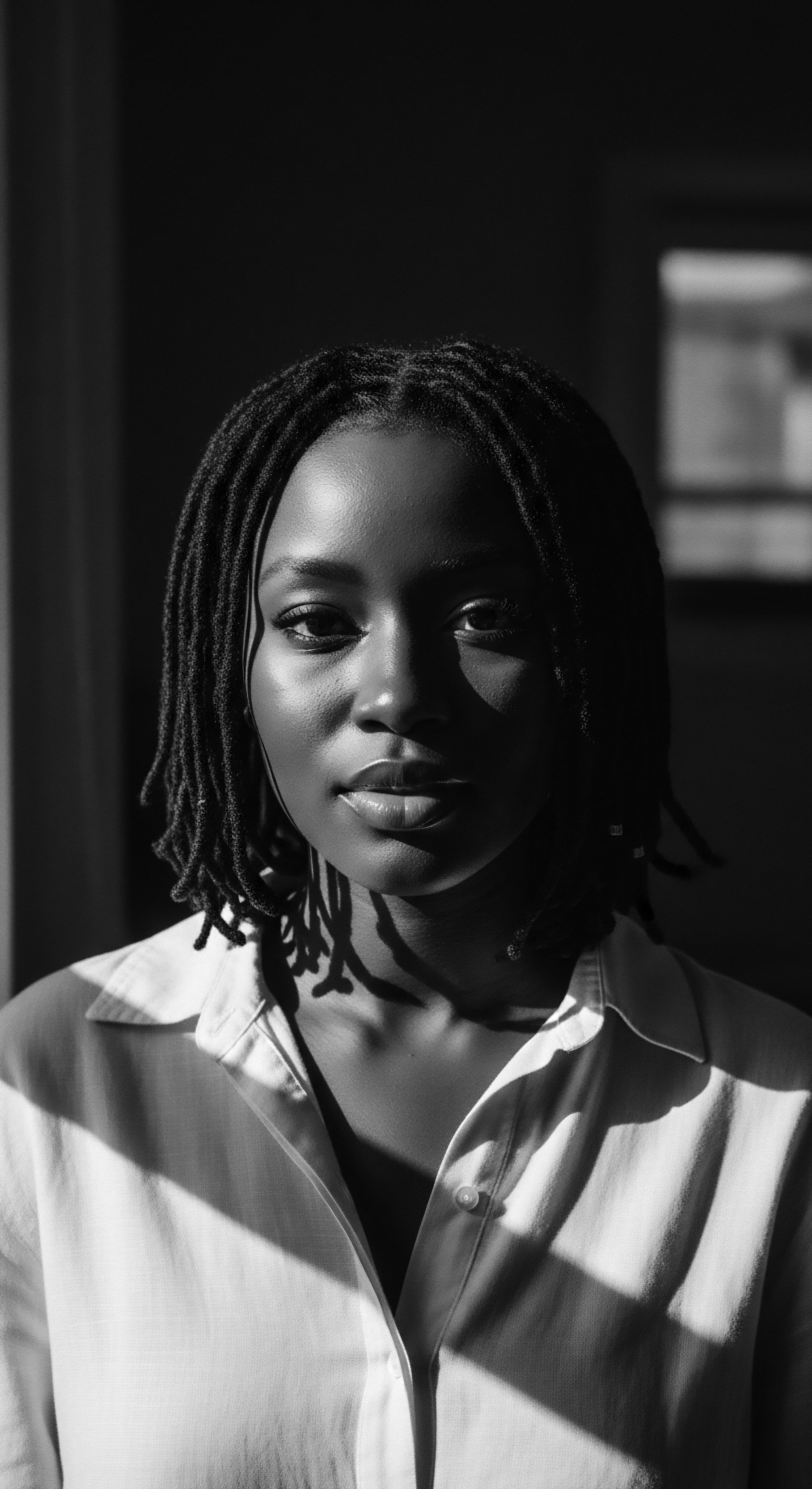
An Essential Lexicon of Textured Hair
The language used to describe textured hair carries within it a journey from ancestral reverence to imposed disdain, and finally, to reclamation. Terms such as “kinky,” “coily,” “wavy,” and “locs” are now celebrated descriptors, yet some historically carried negative connotations, born from a desire to demean and control. Consider the “Tignon Laws” of 1786 in Spanish colonial Louisiana, which mandated that Creole women of color cover their elaborate hairstyles with a tignon or headscarf.
This was an attempt to visually mark them as members of the slave class and to prevent them from attracting white men, challenging the social order. These women, however, defied the oppressive intent by adorning their tignons with vibrant fabrics and jewels, transforming symbols of subjugation into statements of defiance and beauty.
This historical instance stands as a powerful testament to how language and social rules, even when aiming to demean, can be subverted. The term “nappy,” for instance, once a pejorative comparison of textured hair to wool, has been re-appropriated by some as a term of endearment and pride within Black communities, stripping it of its colonial sting. The vocabulary of textured hair today is a testament to this linguistic battle, a celebration of terms that reflect authenticity and connection to lineage.
| Historical Period/Context Pre-Colonial African Societies |
| Dominant Perception/Practice Hairstyles conveyed social status, age, marital status, spiritual connections. |
| Connection to Heritage Deeply interwoven with communal identity, ancestry, and communication. Hair as a crown. |
| Historical Period/Context Transatlantic Slave Trade |
| Dominant Perception/Practice Forced shaving of heads; hair became a tool of dehumanization; hidden messages in braids. |
| Connection to Heritage Severing of cultural ties; hair as a hidden means of survival and resistance. |
| Historical Period/Context Post-Slavery Era (e.g. Tignon Laws) |
| Dominant Perception/Practice Legislation to control appearance; pressure to straighten hair for "acceptance." |
| Connection to Heritage Resistance through adornment; the "good hair" vs. "bad hair" dichotomy imposed. |
| Historical Period/Context Black Power Movement (1960s-1970s) |
| Dominant Perception/Practice Afro as a symbol of pride, political statement, and rejection of Eurocentric ideals. |
| Connection to Heritage Reclamation of ancestral aesthetics; hair as a visual declaration of selfhood. |
| Historical Period/Context Understanding these shifts reveals how deeply hair, its care, and its styling are tied to the enduring heritage of Black people. |
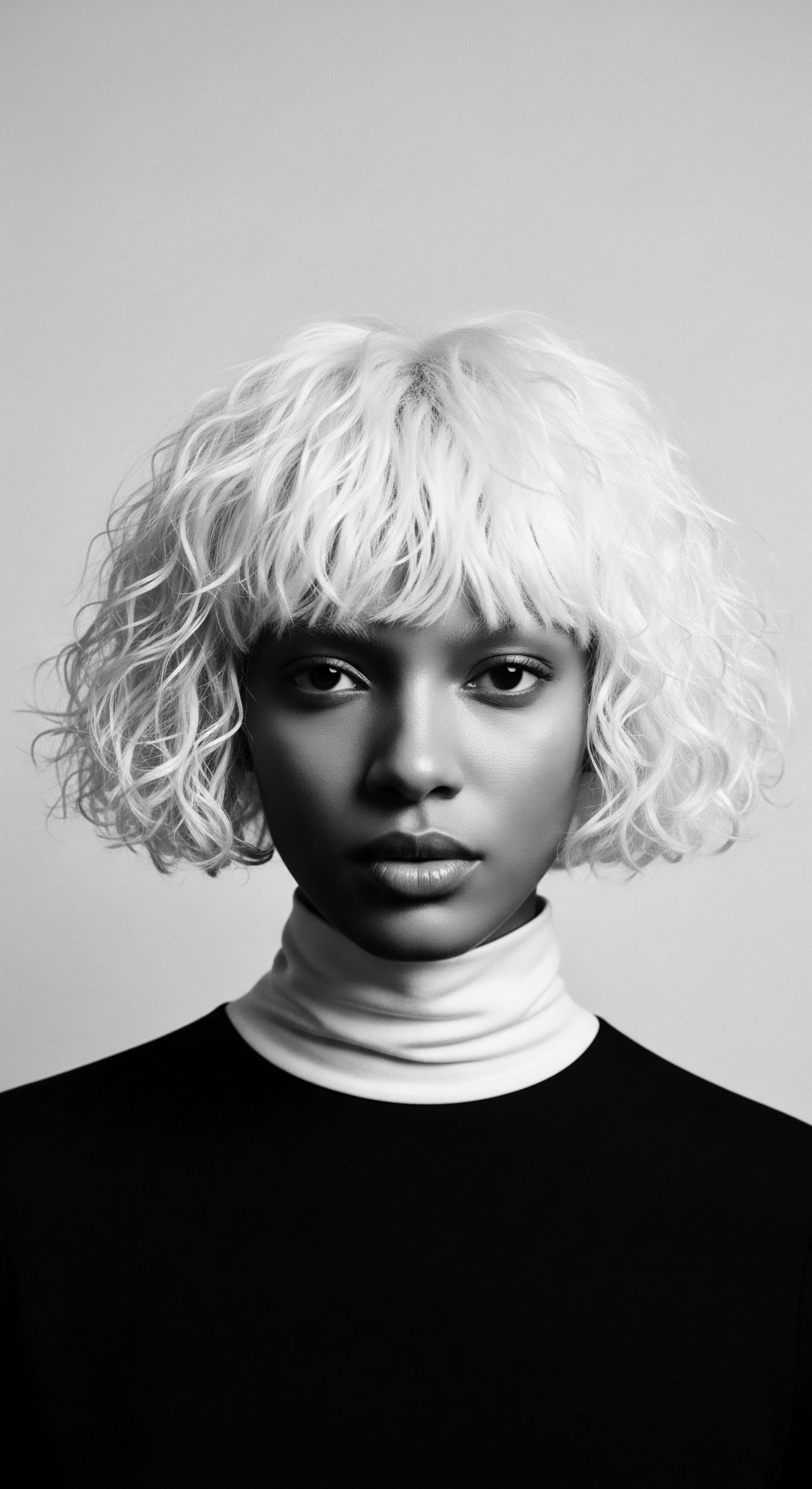
Hair Growth Cycles and Historical Influences
The very life cycle of textured hair, from its genesis to its shedding, speaks to adaptability and the influence of environment. Our modern understanding of anagen (growth), catagen (transition), and telogen (resting) phases allows for scientific care. However, historical practices within ancestral communities intuitively understood these cycles. Diet, access to specific herbs, and communal knowledge of natural remedies played a vital role in supporting hair health.
Consider the impact of the transatlantic slave trade on hair health. Enslaved Africans, deprived of traditional nourishing diets, communal care rituals, and customary tools, faced immense challenges in maintaining their hair. This led to matted hair, often covered by scarves. Yet, even in such dire circumstances, resilience surfaced.
Some enslaved women braided rice seeds into their hair as a means of sustenance and to carry remnants of their homeland’s agricultural heritage, effectively using their hair as a covert tool for survival. This highlights a battle not just against external oppression, but also the internal fight to preserve physiological health and ancestral practices under extreme duress. The simple act of retaining growth, even amidst brutality, was a silent victory for heritage.

Ritual
The ritual of caring for and styling textured hair carries generations of memory within its practice. It is a profound inheritance, shaped by ancestral wisdom, resistance, and vibrant artistry. Socio-political struggles have long attempted to dictate the very contours of these traditions, from forced alterations to the policing of natural forms in public spaces. Yet, through every challenge, the ingenuity and spirit of Black and mixed-race communities have continuously reshaped these rituals into acts of self-affirmation and collective identity.
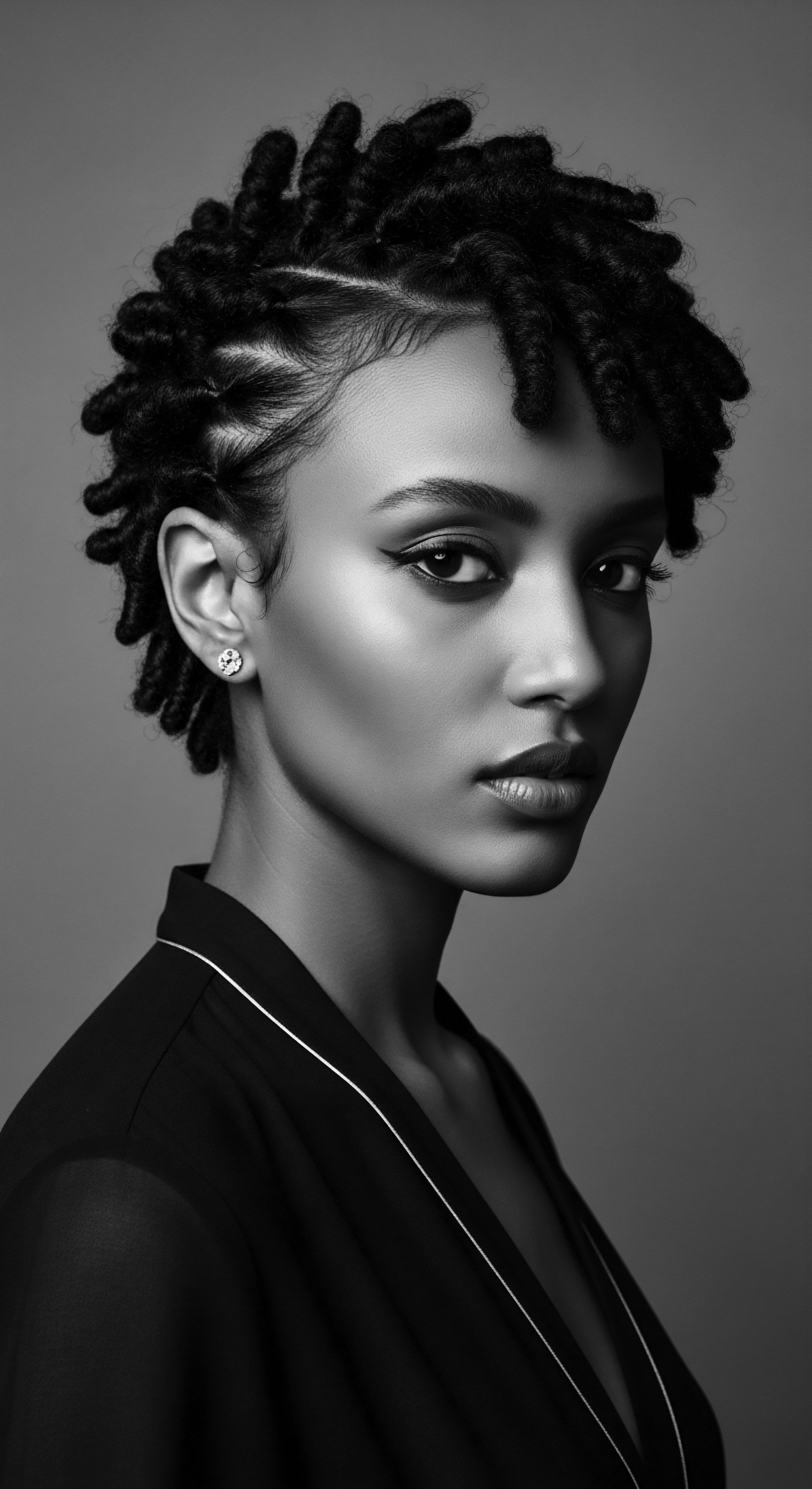
Protective Styles and Their Ancestral Roots
Protective styles, a cornerstone of textured hair care, possess a lineage extending deep into African history. Styles like braids, twists, and cornrows were not merely aesthetic choices in ancient West African societies; they functioned as intricate markers of social status, marital standing, age, and even military rank. The patterns could denote tribal affiliation or communicate complex messages. When Africans were forcibly transported during the transatlantic slave trade, enslavers often shaved their heads, a brutal act designed to strip them of their identity and cultural connections.
Despite this violent erasure, the ancestral knowledge persisted. Enslaved people cunningly utilized cornrows to map escape routes to freedom, braiding patterns that mirrored roads and pathways, sometimes even concealing rice seeds or gold within the strands for survival. This transformation of a traditional practice into a survival mechanism illustrates the fierce socio-political battle waged against basic self-determination, and the remarkable ways heritage was preserved.
The resistance continued through various eras. Even as dominant society pushed for straightened hair, protective styles remained an undercurrent of cultural preservation. The rise of the Black Power Movement in the 1960s witnessed a powerful reclamation, with the Afro becoming an iconic symbol of self-assertion and defiance against Eurocentric beauty norms. This resurgence of natural styles, including braids and locs, became a visible sign of rejecting assimilationist pressures.
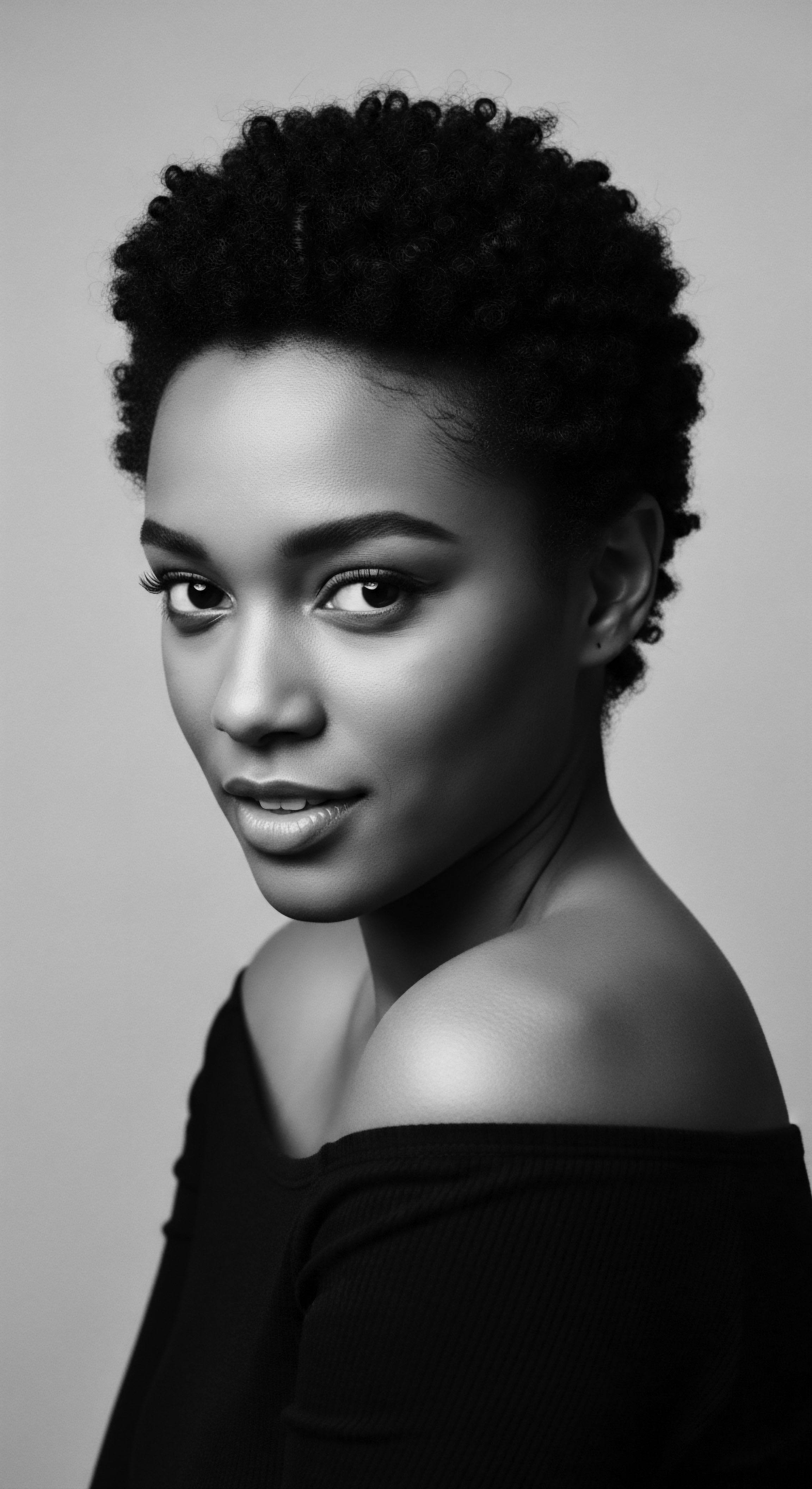
Natural Styling and Defining Heritage
The contemporary natural hair movement, which gained considerable momentum in the early 2000s, echoes these historical sentiments of reclaiming ancestral authenticity. This movement emphasizes the celebration of natural curls, coils, and kinks without chemical alteration. However, the path to this celebration was fraught with socio-political contention.
For generations, Black individuals faced immense pressure, both explicit and implicit, to conform to straightened hair ideals to secure employment, educational opportunities, or simply social acceptance. The concept of “good hair,” often signifying looser curls or straight textures, was a direct consequence of this historical bias.
The journey to embracing one’s natural texture has often involved personal battles against internalized beauty standards. Many individuals report feeling “unprofessional” or “unacceptable” with their natural hair due to prevailing biases in society. This internal struggle is a direct consequence of a historical socio-political environment that devalued Black hair. The increasing visibility of natural hair in mainstream media and professional spaces is a testament to ongoing advocacy and a collective insistence on celebrating the inherent beauty of textured hair.
The artistry of textured hair styling, from ancient protective braids to modern affirmations of natural coils, has always been a powerful statement of heritage in the face of societal pressures.

Wigs, Extensions, and Cultural Continuity
The use of wigs and hair extensions within Black communities carries a complex history, intertwined with both self-expression and the socio-political landscape. In some ancient African societies, wigs and added hair pieces were part of elaborate ceremonial attire, signifying status or spiritual roles. These were extensions of existing aesthetic and cultural practices.
However, during and after slavery, the purpose of wigs and extensions often shifted. For many, they became a means of survival, allowing individuals to conform to white beauty standards and thereby potentially access opportunities in a discriminatory society. The market for hair straightening products and wigs flourished, with entrepreneurs like Madam C.J.
Walker building empires by providing solutions for “taming” hair to meet these imposed standards. This historical context highlights how economic realities and social pressures transformed cultural practices into tools for navigating oppressive systems.
Today, wigs and extensions also function as versatile styling options and protective measures, allowing for experimentation while safeguarding natural hair. The choice to wear them, or to wear natural hair, is increasingly seen as an act of personal autonomy and cultural pride, a reclaiming of agency over one’s appearance, decoupled from the historical pressures of forced assimilation.
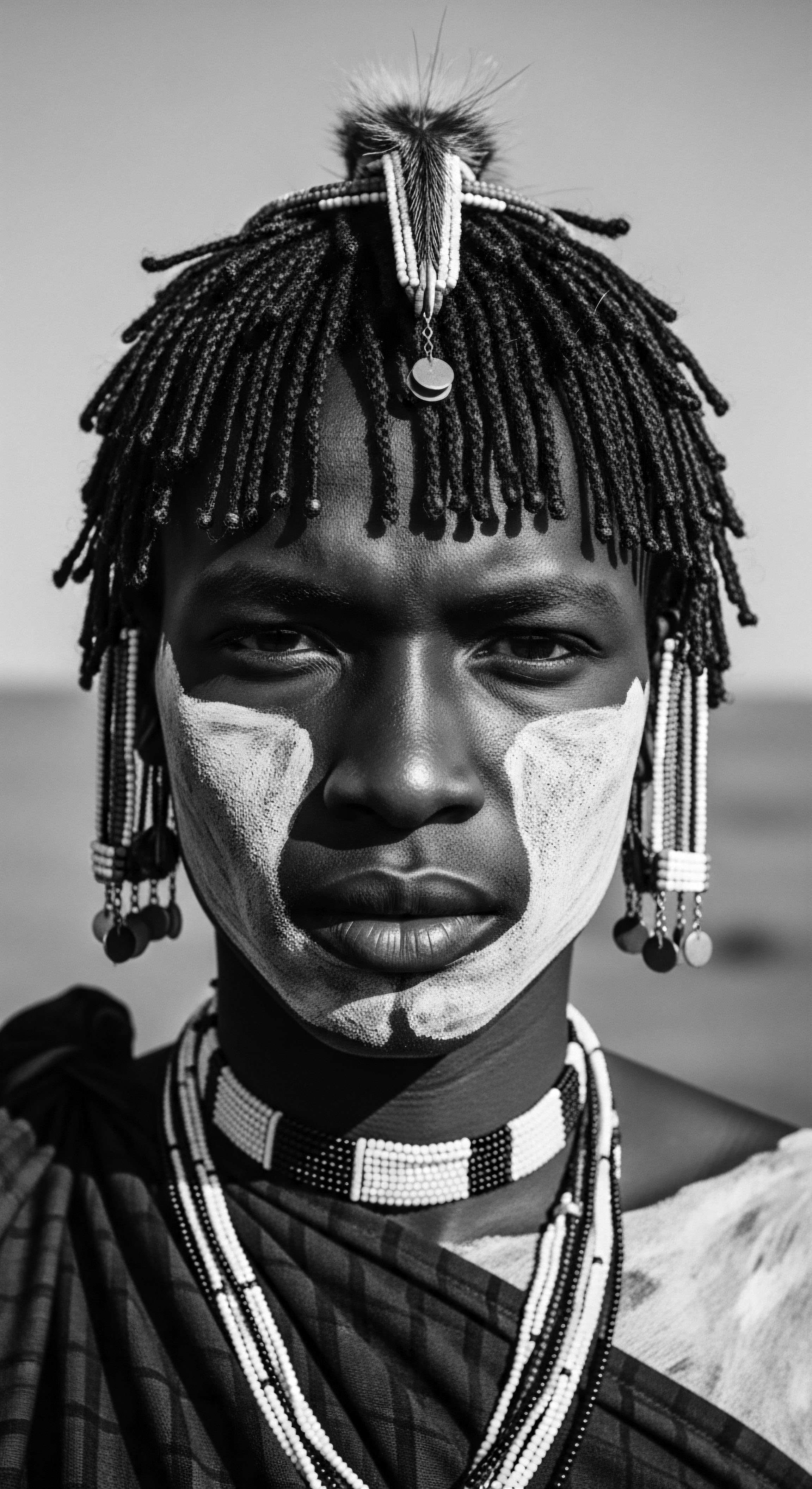
Heat Styling and Ancestral Contrasts
Heat styling, particularly the use of hot combs and flat irons, gained widespread acceptance in the early 20th century as a method to achieve straightened hair, largely driven by the prevailing Eurocentric beauty ideals. This practice, while offering a means of conformity, also brought with it the risk of damage to delicate textured strands. The contrast with ancestral methods is striking. Traditional African hair care prioritized preserving the hair’s natural state, focusing on moisturizing ingredients, gentle manipulation, and protective styles that required no heat.
The promotion of heat straightening became part of a larger socio-political message, suggesting that natural textured hair was “unmanageable” or “unprofessional”. This narrative directly impacted the self-perception and hair care practices of Black and mixed-race individuals for generations. The slow re-education about the vulnerabilities of textured hair to heat and the beauty of its natural patterns marks a significant cultural shift, emphasizing care over conformity. The knowledge of proper heat protection and minimal use, if at all, reflects a modern reconciliation of scientific understanding with a revived reverence for the hair’s original heritage.
Some traditional hair styling tools that connect directly to ancestral wisdom and contemporary practice include:
- Afro Pick ❉ An ancient tool, sometimes dating back 6,000 years, adapted and repurposed to aid in shaping and maintaining voluminous Afro styles, symbolizing pride and cultural resurgence.
- Wooden Combs ❉ Crafted from natural materials, these tools facilitated gentle detangling and styling, minimizing breakage, a practice found in many ancient African communities for centuries.
- Fingers ❉ The most ancient and gentle of all tools, used for intricate braiding, twisting, and sectioning, emphasizing touch and personal connection during styling rituals passed down through families.

Relay
The journey of textured hair traditions is a relay of knowledge, resilience, and identity passed from one generation to the next. Socio-political battles have not only sought to alter the physical presentation of textured hair but also aimed to disrupt the ancestral wisdom embedded in its care and the holistic well-being connected to it. Yet, the deep understanding of hair as a sacred extension of self, a conduit to heritage, has persisted, informing contemporary routines and problem-solving strategies.
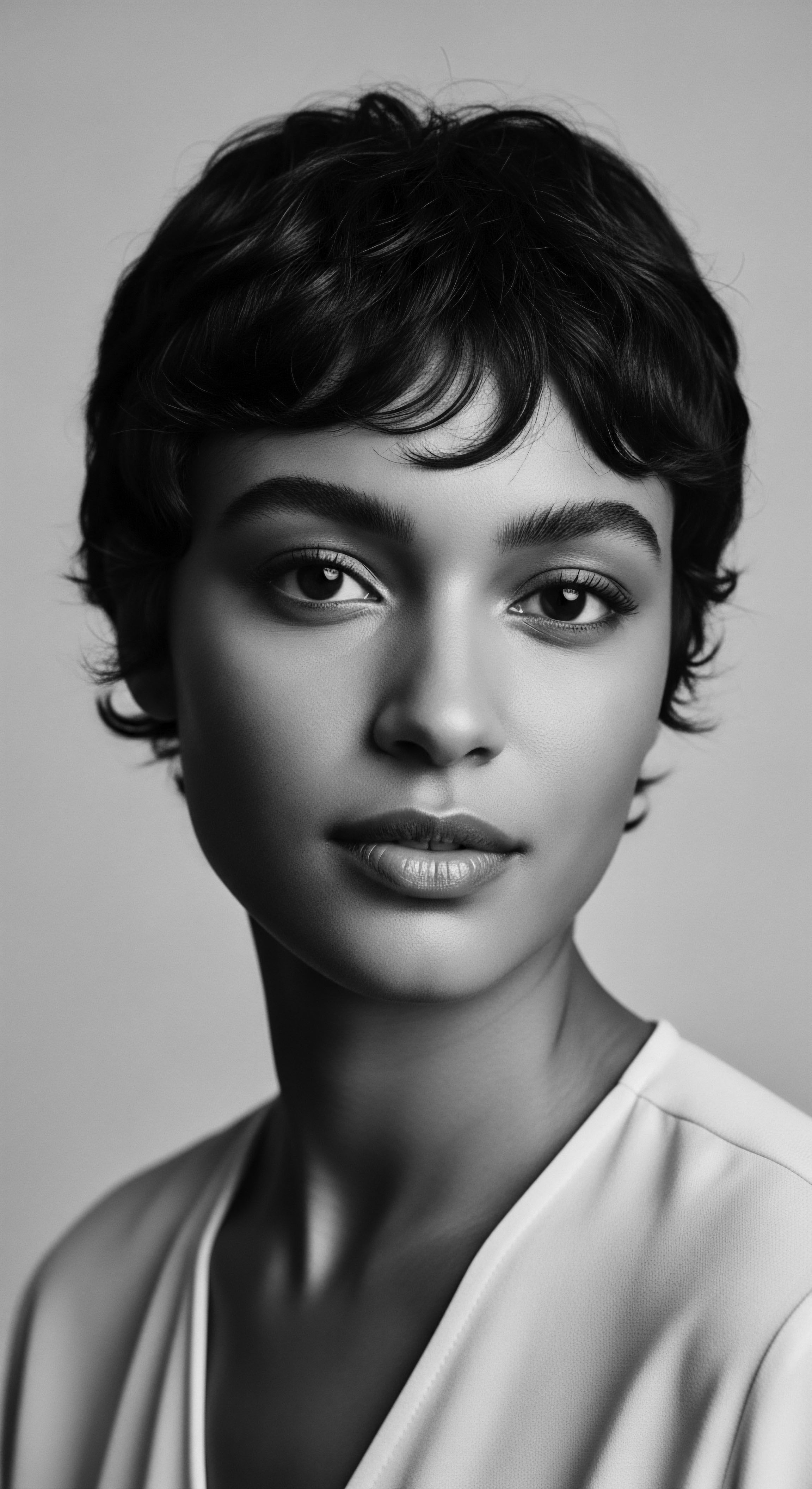
Building Personalized Regimens Rooted in Ancestral Wisdom
The creation of a personalized textured hair regimen is a testament to centuries of accumulated knowledge, blending ancient practices with modern scientific understanding. For generations, ancestral communities developed sophisticated methods for maintaining hair health using ingredients readily available from their natural surroundings. These were not random acts; they were methodical approaches to cleansing, moisturizing, and protecting hair, often intertwined with spiritual and communal gatherings. The continuity of these practices, often transmitted orally from elder to child, represents a quiet, yet powerful, act of cultural preservation against systemic attempts to devalue Black bodies and their aesthetics.
The socio-political pressures that forced many to abandon these ancestral practices in favor of straightening technologies caused considerable damage, both physically to the hair and psychologically to individuals. The long-term effects of chemical relaxers, for example, have included breakage, thinning, and scalp irritation, driving a renewed interest in natural methods and products. This shift reflects a conscious decision to prioritize the health and integrity of textured hair, honoring its natural state.
It is a decision to break free from the cycle of chemical dependency fostered by a beauty industry that historically profited from the insecurity created by Eurocentric beauty standards. The modern regimen, therefore, is not merely a set of steps; it is a declaration of self-acceptance and a return to practices that affirm one’s inherited beauty.

The Nighttime Sanctuary and Bonnet Wisdom
The humble bonnet, the silk scarf, or the satin pillowcase might seem like simple accessories, but their widespread adoption within textured hair care is deeply rooted in ancestral wisdom and a pragmatic response to the hair’s unique needs. For generations, particularly within Black communities, the practice of protecting hair overnight has been commonplace. This seemingly simple ritual combats tangling, friction, and moisture loss, all of which can compromise the integrity of delicate curls and coils.
While the specific materials have evolved, the underlying principle of preservation remains constant. This care tradition stands in quiet defiance to a world that often failed to provide resources or acknowledge the specific needs of textured hair. The lack of culturally appropriate hair care products and knowledge in mainstream markets for much of history meant that communities relied on their ingenuity and inherited practices to maintain hair health.
The consistent use of head wraps and coverings throughout history, from ancient African traditions to their pragmatic use by enslaved people to protect their hair from harsh conditions, highlights a continuum of care and protection. The bonnet, in its modern iteration, stands as a symbol of self-care and a continued dedication to protecting hair, even as discriminatory societal norms recede.
What specific historical instances reflect the policing of textured hair beyond aesthetics?
Beyond the imposition of Eurocentric beauty standards, the policing of textured hair has manifested in explicit socio-political battles over basic rights and public presentation. One chilling example is the “Tignon Laws” enacted in colonial Louisiana in 1786. This legislation specifically mandated that free women of color wear a headscarf (tignon) to conceal their hair when in public. The intent was not about hygiene or styling; it was a deliberate attempt to assert social control, to differentiate these women from white women, and to visually enforce their perceived lower status regardless of their actual freedom.
This legal decree illustrates a direct governmental attempt to suppress cultural expression and identity through hair. However, the women of New Orleans responded with spirited defiance, transforming the mandated scarves into elaborate, brightly colored, and adorned headwraps, effectively subverting the law’s oppressive aim and reclaiming their agency. This powerful historical case demonstrates how a direct socio-political battle over hair was met with creative resistance, turning an imposed regulation into an opportunity for continued cultural expression and a defiant statement of heritage. This was not a subtle bias; it was an overt legal attempt to control the Black body and identity through its most visible adornment.
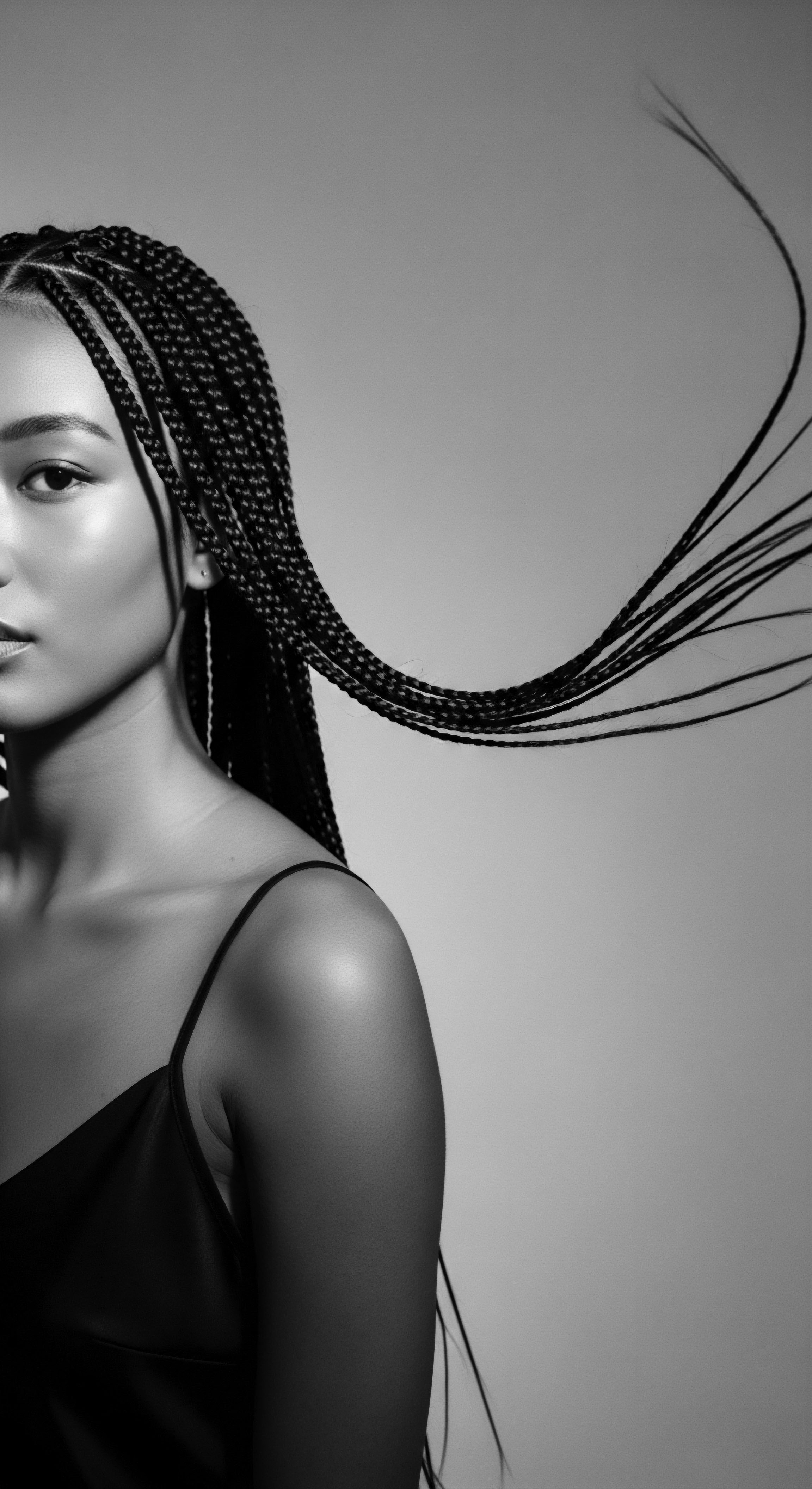
Ingredient Deep Dives and Ancestral Remedies
A deep dive into ingredients for textured hair care reveals a lineage of natural remedies and botanical wisdom passed down through generations. Before the advent of modern cosmetic chemistry, ancestral communities relied on a profound understanding of their local flora and fauna to formulate hair treatments. Shea butter, various plant oils, and herbal infusions were not merely anecdotal remedies; they were empirically tested solutions for moisture retention, conditioning, and scalp health. The careful preparation of these ingredients, often part of communal rituals, connects modern users to a rich heritage of natural wellness.
For instance, the use of shea butter (Butyrospermum parkii) for hair and skin care in West Africa dates back centuries. Its emollient properties and ability to seal in moisture were understood long before scientific analysis confirmed its fatty acid profile. Similarly, coconut oil , widely used in various diasporic communities, particularly those with connections to the Caribbean and parts of Asia, served as a fundamental conditioner and styling aid. The displacement caused by slavery often severed access to these traditional ingredients, forcing adaptations with whatever was available, sometimes leading to harmful practices like using harsh chemicals for straightening.
The contemporary focus on natural, heritage-inspired ingredients represents a return to these foundational practices, driven by a desire for both efficacy and a deeper connection to ancestral ways of being. This reconnection is a quiet but firm stand against the erasure of traditional knowledge.
Examples of ancestral ingredients revered for textured hair health:
- Shea Butter ❉ From the shea tree, known for its moisturizing and protective properties, used for centuries in West African communities.
- Castor Oil ❉ Particularly Jamaican Black Castor Oil, used for its purported ability to strengthen hair, promote growth, and treat scalp conditions, with roots in West African traditional medicine.
- Aloe Vera ❉ Valued for its soothing, moisturizing, and conditioning benefits across many cultures, including African and Caribbean ancestral practices.
- Chebe Powder ❉ A traditional hair secret from Chad, used by women to strengthen hair, reduce breakage, and promote length retention.
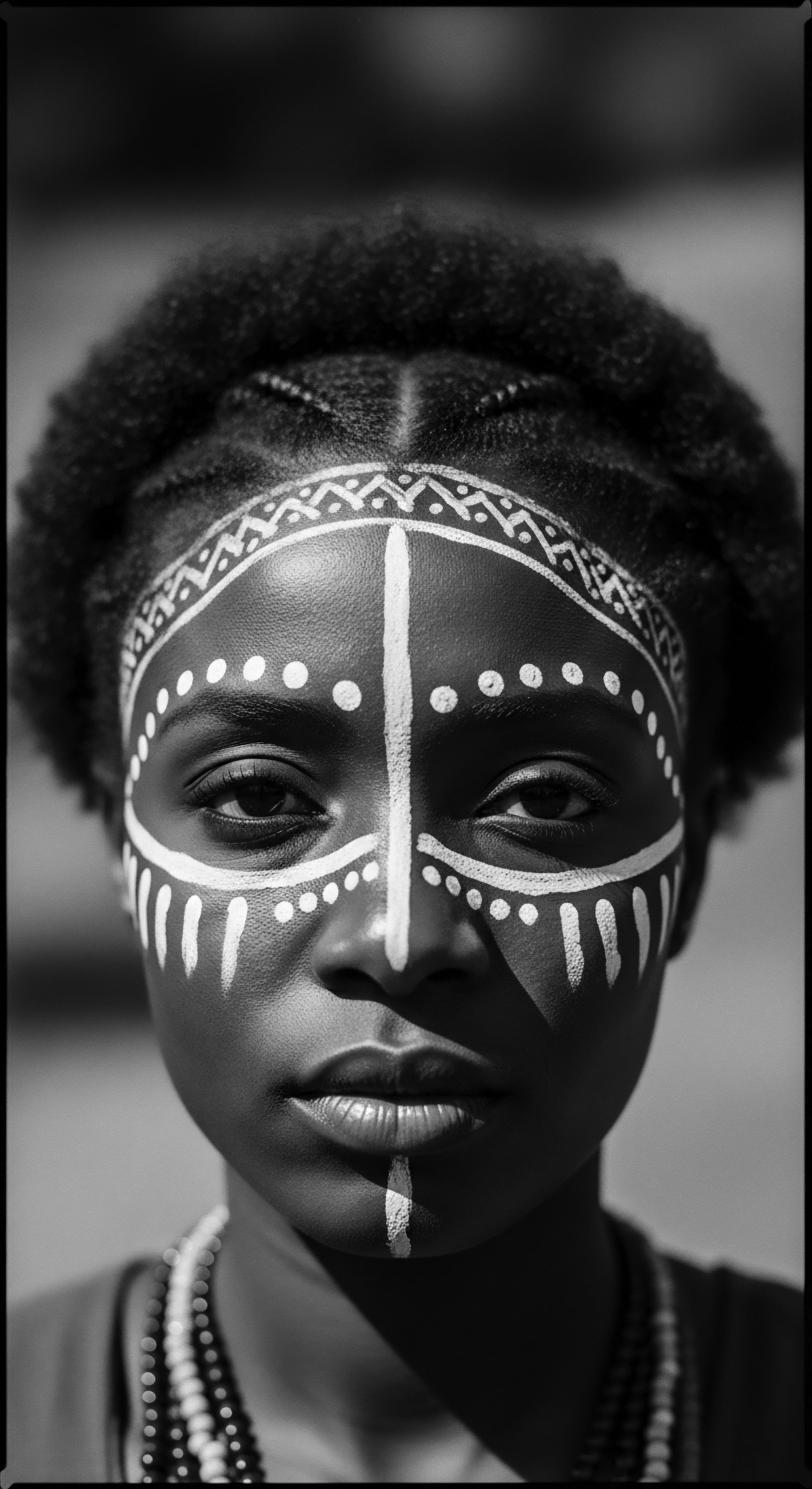
Textured Hair Problem Solving and Holistic Influences
Addressing challenges with textured hair, such as dryness, breakage, or tangling, requires more than just product application; it demands a holistic perspective rooted in ancestral wellness philosophies. Traditional healing systems often viewed the body as an interconnected whole, where hair health reflected overall vitality. This contrasted sharply with the reductionist approaches that emerged during periods of discrimination, where the problem was often framed as the hair itself being “difficult” or “bad,” rather than the environment or imposed practices being detrimental.
The socio-political environment created scenarios where textured hair problems were exacerbated. The pressure to chemically straighten hair, for example, frequently led to irreversible damage, creating new sets of challenges that then required further interventions. This cycle was reinforced by a lack of understanding and a scarcity of products formulated for natural textured hair, leading many to feel their hair was inherently problematic.
The subsequent development of specialized hair care routines, often popularized through communal sharing and digital platforms, has empowered individuals to address these issues effectively. The very act of discerning and solving for textured hair challenges is a continuation of ancestral ingenuity, adapting wisdom for modern conditions, demonstrating the resilience of heritage knowledge in the face of ongoing societal pressures.

Reflection
The journey of textured hair traditions, from its elemental biology to its intricate styling and deeply personal care rituals, mirrors the enduring spirit of Black and mixed-race communities. Each curl, coil, and kink holds a whisper of ancestral memory, a testament to struggles endured and triumphs claimed. The socio-political battles faced by textured hair are not relics of a distant past; they echo in contemporary biases, in unspoken assumptions, and in the ongoing fight for equitable representation. Yet, in every deliberate act of embracing natural texture, in every shared care ritual, in every product crafted with respect for its unique needs, there is a powerful affirmation of self, a reconnection to a rich, unbroken lineage.
Roothea’s ethos, “Soul of a Strand,” compels us to recognize that hair is far more than protein and pigment; it is a living archive. It holds stories of survival, artistry, and a tenacious hold on identity when forces sought to erase it. The legacy of resilience, passed down through the generations, continues to shape how we view, care for, and celebrate textured hair today. As we continue to learn, adapt, and share, we contribute to this living library, ensuring that the wisdom of our ancestors, the beauty of our heritage, and the strength of our strands remain unbound, speaking volumes for generations yet to come.

References
- Byrd, Ayana, and Lori L. Tharps. Hair Story ❉ Untangling the Roots of Black Hair in America. St. Martin’s Publishing Group, 2020.
- Ellington, Tameka, and Joseph L. Underwood. Textures ❉ The History and Art of Black Hair. Schiffer Publishing, 2020.
- Patton, Tracey Owens. “Hey Girl, Am I More Than My Hair?” Text and Performance Quarterly, vol. 28, no. 1, 2008, pp. 31-48.
- Gould, Virginia M. The Devil’s Lane ❉ Sex and Race in the Early South. Oxford University Press, 1997.
- Powell, Ifeoma U. “The Quest for ‘Good Hair’ ❉ Exploring the Impact of Hair Discrimination on Black Women in the Workplace.” UCLA Law Review, vol. 66, no. 4, 2019, pp. 930-975.
